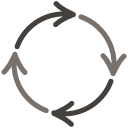
The moment a new task is assigned, it seems monumental and unforgettable. Yet, how often do these tasks slip through the cracks of our busy minds? The solution is beautifully simple: write it down. Translating thoughts into written words not only cements them in our memory but also provides a clear and tangible roadmap of what needs to be accomplished. The act of writing, whether on digital platforms like Google Docs and task management software or traditional paper notepads, transforms nebulous thoughts into concrete actions.
But merely jotting down tasks is not enough; making them memorable is key. Incorporating hand-drawn visuals or using distinctive highlights can make each task stand out, ensuring that when you revisit your notes, the important items jump off the page. This method harnesses the power of visual memory, making it easier to recall and prioritize tasks. The effectiveness of this technique is not just anecdotal; it's backed by research that shows how visual cues can significantly enhance memory and recall.
Different platforms cater to different needs and preferences. Digital tools offer convenience, backups, and portability, while traditional pen and paper bring a tactile element that can aid in memory retention. The choice between digital and analog is a personal one, but the fundamental principle remains the same: the act of writing creates a psychological commitment to the task, increasing the likelihood of completion.
In conclusion, the strategy of writing down tasks leverages basic cognitive principles to improve productivity and organization. By making your tasks visible and distinct, you not only set a clear direction for your day but also empower yourself to take control of your workload. So next time a new task comes your way, take a moment to write it down. This simple act could be the difference between a forgotten idea and a fulfilled goal.






































